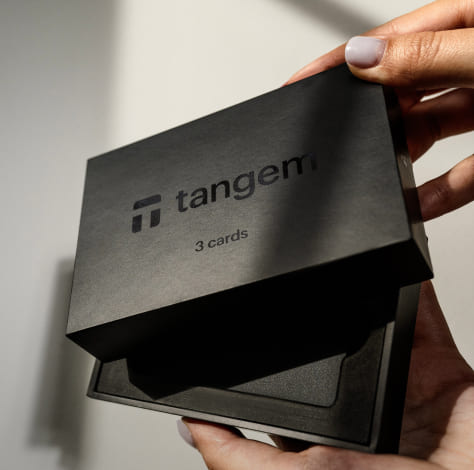
Most hardware wallets feature a kill switch function that allows users to execute an emergency wipe of their device. This procedure is necessary to protect funds in case of theft or loss. By following simple steps, users can ensure that sensitive information is erased, preventing unauthorized access to their cryptocurrency. Knowing how to activate this feature can provide significant peace of mind, allowing for swift action in emergencies.
Key Takeaways:
- Enables users to securely erase sensitive data from the wallet in the event of theft or loss.
- Can be activated through a specific combination of buttons or a dedicated emergency feature.
- Important to have a backup recovery method to restore access after the wipe process.
Understanding Hardware Wallets
The rise of digital currencies has led to the increased need for secure methods of storing cryptocurrencies. Hardware wallets are specialized devices designed to securely store a user’s private keys offline. This makes them significantly less vulnerable to hacking or online threats compared to software wallets or exchanges.
What is a Hardware Wallet?
Across the cryptocurrency landscape, hardware wallets serve as a physical security solution for managing digital assets. These devices typically feature robust encryption and require physical interaction for any transaction, offering a layer of protection that software wallets cannot provide. Users keep their private keys stored on the device itself, which is disconnected from the internet, minimizing the risk of unauthorized access.
Benefits of Using Hardware Wallets
Using hardware wallets offers several advantages for cryptocurrency holders, making them a preferred choice for long-term storage. They provide enhanced security through offline storage, safeguarding assets against online threats. Additionally, these wallets are often user-friendly, featuring intuitive interfaces that allow for easy transaction management. The prospect of isolated key storage can give users peace of mind, reducing the risk of loss or theft.
Considering the potential threats in the digital asset space, the security features of hardware wallets are paramount. By keeping private keys offline and requiring physical confirmation for transactions, they effectively reduce the risk of hacks. Furthermore, many hardware wallets incorporate backup and recovery options, enabling users to regain access to their funds in case of loss or damage, thus enhancing their overall safety and reliability.
The Need for a Kill Switch
Assuming you are managing significant crypto assets, the potential risks associated with a hardware wallet become evident. Security breaches, theft, or loss of access to your device can pose serious threats to your financial assets, necessitating the implementation of a robust emergency protocol. A kill switch enables users to wipe their wallet’s contents quickly, reducing the chance of unauthorized access and protecting investments against malicious actors.
In situations where immediate action is required, a kill switch is indispensable. It ensures that if the hardware wallet is compromised or misplaced, the user’s assets can be safeguarded through a swift and decisive emergency wipe. This feature plays a vital role in maintaining long-term security for digital investments.
What is a Kill Switch?
For hardware wallets, a kill switch refers to a feature that allows users to erase all private keys and account information from the device instantly. This functionality acts as a protective measure against scams or hacking attempts, ensuring that sensitive data does not fall into the wrong hands. A well-implemented kill switch can significantly mitigate risks associated with hardware vulnerabilities or behavioral lapses.
This tool typically operates through a combination of physical buttons or software commands, providing users a straightforward method to activate the wipe process. The simplicity and accessibility of this feature underscore its importance for anyone holding significant cryptocurrency investments.
Scenarios Requiring an Emergency Wipe
By assessing various scenarios, it becomes evident when an emergency wipe might be necessary. Examples include losing the hardware wallet, detecting unauthorized access attempts, or if the device is being misplaced in a public area. Such situations create an urgent need for a kill switch to protect assets from potential theft or unauthorized access.
Switching to an emergency wipe is vital when your hardware wallet is compromised or you experience suspicious activity. In any situation where you fear your private keys or sensitive information might be exposed, executing an immediate wipe can safeguard your assets while preventing unauthorized access. Quick action in these circumstances can yield a positive outcome and ensure your investments remain secure.
Emergency Wipe Procedures
After identifying a potential security compromise, executing an emergency wipe on your hardware wallet becomes a necessity to safeguard your assets. This procedure ensures that any unauthorized access is nullified, and your sensitive information is effectively erased. The wipe process is irreversible; thus, preparation is key prior to initiation.
Pre-Wipe Preparations
Preparations start by ensuring that you have backed up all imperative data securely. This includes saving recovery phrases and private keys in multiple safe locations. Assessing your current hardware wallet firmware version is also important, as outdated software may present vulnerabilities during the wipe process.
Next, inform any necessary parties involved in wallet management about the impending wipe. It’s also beneficial to have a secure, offline device ready to receive and restore your assets post-wipe, if applicable. By organizing these elements, you mitigate risks of data loss during the wipe.
Step-by-Step Wipe Instructions
Before initiating the wipe, ascertain the exact method specific to your hardware wallet as procedures might vary. Below are common steps to follow:
| Power on the device | Ensure all connections are secure. |
| Access settings menu | Navigate to the security or reset options. |
| Select “Factory Reset” or “Wipe” | Confirm the action for the wipe to begin. |
| Follow prompts on-screen | Be attentive to finalize the process as directed. |
Wipe actions must be executed calmly and methodically to ensure proper routine execution. Always verify the completed wipe by attempting to access the device afterward; it should show no stored information. Doing this prevents accidental mishandling and ensures that the wallet is fully cleared of any sensitive data.
| Check device status | Boot up the device to confirm the wipe. |
| Reinitialize wallet setup | Set up the wallet using the previously secured backup. |
Post-Wipe Recovery
All users should follow a systematic approach to regain access to their hardware wallet after performing an emergency wipe. The first step typically involves reinstalling the wallet software or firmware provided by the manufacturer. This ensures that users have the latest security updates and features. Following the installation, the recovery process can commence by entering the recovery phrase or seed that was securely stored prior to the wipe. This phrase is vital for restoring access to the wallet and should never be shared with anyone.
Restoring Wallet Access
Above all, it’s important to keep the recovery phrase stored in a safe location, as it is your only means of accessing the wallet post-wipe. Users can proceed to restore their wallets by selecting the option to recover using the seed phrase during the setup process. Be cautious about the environment in which this recovery takes place; it should be a private and secure setting to mitigate risks of unauthorized access.
Security Best Practices After Wipe
Before setting up the wallet post-wipe, consider implementing layered security measures to enhance protection. Changing passwords, enabling two-factor authentication where available, and utilizing secure backup methods are all vital steps. Engaging in vigilant monitoring of wallet activities can also provide insights into any potentially unauthorized access attempts, bolstering overall security.
With a solid understanding of security best practices post-wipe, users can further safeguard their assets by regularly updating the wallet software and conducting thorough reviews of all connected devices. Periodically reviewing security settings and being wary of phishing attempts is important. By amalgamating strong security practices and maintaining vigilant monitoring, users can ensure their wallet remains secure and functional after a wipe.
Common Mistakes to Avoid
Not taking the necessary precautions can lead to serious consequences when relying on hardware wallets. A significant oversight is the lack of regular maintenance and updates to the device’s firmware, which can expose vulnerabilities. Always ensure you are following safe practices to maintain your wallet’s security.
Ignoring Regular Backups
By neglecting to perform regular backups, users significantly increase the risk of losing access to their cryptocurrency. Backups should be current and stored securely in multiple locations to safeguard against data loss. It’s imperative to have a reliable recovery method in place, as the hardware itself can become damaged or lost.
Failing to Test the Kill Switch
On many occasions, users assume their kill switch is operational without conducting any tests. This assumption can lead to disastrous outcomes where the wipe function does not work when needed. Regularly testing the kill switch ensures that the process for protecting sensitive information is effective and functional.
Switch testing the kill switch is imperative as it confirms the reliability of your emergency wipe procedures. If not tested, you may find that the wipe function fails in a moment of crisis, leading to exposure of your private keys and digital assets. Thus, proactively verifying these processes can turn an otherwise stressful event into a smoother recovery, fostering peace of mind in your security strategy.
Future Considerations for Hardware Wallet Security
To ensure the longevity of hardware wallets, it is necessary to continuously adapt to the shifting landscape of security threats. With the rapid advancements in hacking techniques and malware, hardware wallet manufacturers must prioritize developing more robust security measures. This involves incorporating features such as biometric authentication and advanced encryption protocols to safeguard users’ assets against unauthorized access.
To keep pace with evolving technologies, users must stay informed about the latest security practices and remain vigilant against potential vulnerabilities. As the digital asset ecosystem expands, collaboration between industry stakeholders will play a key role in establishing best practices and developing robust security standards for hardware wallets.
Evolving Security Threats
Security threats are becoming increasingly sophisticated, making it imperative for hardware wallet developers to stay ahead. Cybercriminals are leveraging techniques like social engineering and phishing to compromise user credentials and access private keys. Furthermore, the rise of decentralized finance (DeFi) platforms has introduced additional attack vectors, such as exploiting smart contract vulnerabilities.
As the landscape of digital currencies continues to evolve, hardware wallets must adapt to counter these emerging threats. Regular software updates and timely firmware releases will be necessary in providing ongoing protection for users. Furthermore, educating users about potential risks associated with their hardware wallets can empower them to take proactive steps in securing their assets.
Innovations in Hardware Wallet Technology
Wallet technology is progressing rapidly, with innovations designed to enhance security and usability. Manufacturers are now integrating features such as modular designs, which allow users to replace compromised components easily. Additionally, the inclusion of multi-signature capabilities can greatly reduce the risk of loss associated with a single point of failure.
But, while technological advancements are promising, they also bring challenges such as ensuring user-friendliness and maintaining a strong focus on physical security. Innovations like integrated secure elements and built-in backup solutions aim to enhance wallet security but must be designed with intuitive interfaces to avoid overwhelming users. Staying proactive about these developments will be vital for maintaining the safety and effectiveness of hardware wallets in the ever-evolving world of digital assets.
To wrap up
Presently, implementing an emergency wipe procedure for hardware wallets is crucial for safeguarding sensitive cryptocurrency assets. These kill switch features enable users to quickly and effectively erase wallet data in case of theft or unauthorized access. By establishing these protocols, users can mitigate risks associated with losing control over their private keys and other sensitive information.
In the aggregate, incorporating a reliable emergency wipe function into hardware wallets enhances overall security and peace of mind for cryptocurrency holders. Users must familiarize themselves with these procedures to ensure they can act swiftly in a crisis, ultimately protecting their investments from potential harm.
FAQ
Q: What is a Hardware Wallet Kill Switch?
A: A Hardware Wallet Kill Switch is a feature designed to immediately erase sensitive data from a hardware wallet in emergency situations, ensuring that private keys and recovery phrases cannot be accessed by unauthorized individuals.
Q: How do I activate the Kill Switch feature?
A: To activate the Kill Switch feature, navigate to the security settings of your hardware wallet, find the Kill Switch option, and follow the prompted instructions to enable it. Make sure to review your wallet’s user manual, as the process may vary by brand.
Q: What steps should I take to perform an emergency wipe?
A: To perform an emergency wipe, locate the Kill Switch button or designated sequence on your hardware wallet, and follow the prompts to erase all data. This process will typically require confirmation to prevent accidental wipes.







